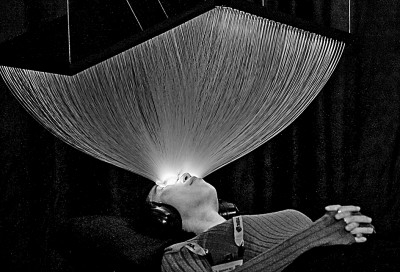Artificial intelligence, technology is ready, what about us?
Author:Guangming Daily client Time:2022.08.18




In recent years, artificial intelligence technology represented by deep learning and strengthening learning has expanded from engineering technology fields such as language translation, image recognition, industrial automation to intelligent production, intelligent agriculture, intelligent logistics, big data macroeconomic monitoring, quantitative investment research, etc. The category of economy and finance can be described as widely used.
Artificial intelligence technology has the congenital advantages of processing high -dimensional data. It can avoid many restrictions on traditional analysis methods by characterizing learning, approximation of value functions, and feature selection, and obtain better prediction and decision -making effects. In order to make artificial intelligence technology achieve satisfactory predictions and decision -making results, researchers often need to invest a lot of data resources. This technical characteristics make data resources and become key production elements. Under the increasingly popular background of big data, intelligence, mobile Internet, and cloud computing, artificial intelligence technology as the underlying technology for providing information products and information services is also the key to the industrial economy gradually transforming to the digital economy.
What is artificial intelligence algorithm
Artificial intelligence algorithms can be roughly divided into supervision learning, unsupervised learning and strengthening learning. Among them, supervision and learning through continuous training procedures (models) from human existing experience. In this type of machine learning, researchers will continuously adjust model parameters to achieve the purpose of learning by labeling data. Similar to parents, they show their children different colors, size, and even types of apples, and teach children to know apples that have "never seen". This is the purpose of supervising learning: extraordinary prediction.
Unsupervised learning can make the machine directly extract features from existing data through training procedures, compress the information to complete other tasks. If the traditional main component analysis, the low -dimensional vector of the high -dimensional signs can be approximate. For example, we can use the main component analysis technology to compress pictures to save storage space. Therefore, such machine learning algorithms do not require past experience, and they are also called unsupervised learning.
Of course, there is not a relationship between opposite each other between unsupervised learning and supervision and learning. For the data that exists in part of the labeled, we can also use semi -supervision learning algorithms. For example, recently more popular neural networks -we can use this algorithm to learn a series of oracle bone texts, so that it can generate multiple "Oracle" that is sufficient to be fake and true, but never represents any meaning, which is equivalent to the calculation program "painting tigers" in the tiger. But I don't know how to be a tiger.
In addition, strengthening learning is different from the above (none, semi -) supervision and learning algorithms. Strengthening learning is an extension of dynamic optimization, while (none, semi -) supervision learning is closer to statistics. Increased learning can continuously interact with the environment with the environment, and to maximize its cumulative income by adjusting the decision parameters (processes) of intelligent programs. Strengthening learning is the closest to the machine learning algorithm closest to the human decision -making process. It is similar to letting an intelligent body infinitely infinitely understand the world, and through its own failure or successful experience to optimize its own decision -making process. In this process Not so needed teachers. Of course, strengthening learning can not be completely split with supervision and learning. For example, AlphaGo is the computing program trained by strengthening learning methods, but at the first stage of AlphaGo training, researchers use a large number of human players to play AlphaGo to imitate learning. Here humans have experience similar to teachers; In the version of Zerogo, imitation learning has been completely abandoned.
In order to make artificial intelligence algorithms universal, we often need a lot of data, computing power and effective calculation algorithms. A large amount of data is equivalent to hiring a knowledgeable teacher to guide computer programs, and high computing power will give computer program the ability to learn knowledge faster. An important direction in the field of artificial intelligence research is to continuously develop computing algorithms that can use existing data and computing power, which is equivalent to providing better learning methods and paths for computer programs. Therefore, data labeling, cloud computing, chip design and algorithm development can be described as the core part of the artificial intelligence industry.
What impact of artificial intelligence technology on social economy
In fact, artificial intelligence technology originated in the 1950s as the discipline. For example, the "Father of Artificial Intelligence" McCarthy made artificial intelligence in the 1950s; Network models and Q learning reinforcement learning algorithms originated in the 1980s. However, if artificial intelligence technology wants to achieve the accuracy comparable to human decision -making, a lot of training (experience) data and high computing power are needed. Therefore, it is not until 2000 that artificial intelligence technology can achieve leapfrog development.
Under the blessing of a large amount of data and high computing power, some artificial intelligence technology has made large -scale accurate decisions in replacing humans, and also replaced more and more artificial positions. Judging from the current influence, on the one hand, machine learning applications have indeed replaced some traditional labor forces, producing labor extruded effects: automated robots make the production process unmanned, and natural language processing technology can better complete most translations Even information extraction work, machine learning algorithms can even be more accurate to qualitatively qualitative small molecular compound properties, which reduces the labor and time consumption required for large -scale repetitive work to a certain extent.
On the other hand, as before, the rise of machine learning, while improving the efficiency of social production, has also created a new job for society. Since the birth of the Industrial Revolution, steam turbines have replaced Mafu and riders, textile machines replaced textile workers, cable telephones, and radio newspapers instead of postman. Electronic computers have saved a lot of handmade calculations by replacing hand -shaking computers. However, it should be noted that each time of scientific and technological progress does not cause a large number of unemployment in society. Instead, it will improve the production efficiency and technological innovation of traditional industries and change the structure of the original social production organization and generate new formats. While changing the production technology of industry enterprises, scientific and technological progress also changes the work content of traditional industries, and new job demand has occurred. Like any other technological innovation, machine learning technology has different degrees of impact on different industries and different positions. The impact of machine learning is undoubtedly disruptive for those who are engaged in production processes. But for those who need to be coordinated, innovated, and interactive, machine learning cannot constitute a significant impact at this stage.
In addition, we also need to realize that artificial intelligence algorithms still cannot reach the "intelligent" level. Any technology is accompanied by security risks, and the artificial intelligence algorithm itself also has risks. For example, most of the supervision and learning algorithms have no clear logic generation process, which not only makes researchers unable to involve the algorithm, but also makes the artificial intelligence algorithm training in training. And the prediction stage becomes less stable. For a simple example, in a classification algorithm, if we change a pixel point in a three -inch kitten, we may recognize the cat's identification of cats as other items. Intelligent technology risk.
As the development of other emerging industries in the early stage, due to the failure to be in place in the early stage of supervision, some companies will use their early advantages in data, computing power, and algorithms, leading to abuse of artificial intelligence technology, monopoly operations of some head enterprises, and privacy data Discovery and even the risk of corporate operations caused by over -dependence on algorithm decisions, which are the application risks and derivative risks of artificial intelligence technology.
Therefore, how to develop this strategic industry has become the top priority at the moment -we need to think about how to play the government's social pocket function during the transformation of economic intelligence, how to exceed the computing power and scientific and technological level in the private industry than the regulatory agency. Regulate its operation and other issues.
Where is the way of the strength of the Intelligent Technology Revolution
Strengthen the investment in R & D, coordinate the development of the industry, achieve the leadership of the core industry, and grasp the dominance of artificial intelligence technology. Artificial intelligence has become a basic core area for national security and development. At present, although the development of artificial intelligence in my country has a overall situation, there are still many problems in basic research, technical system, application ecology, and innovation development. Therefore, with the interdisciplinary cross -disciplinary and application transformation as the basic research on the field of artificial intelligence, increase the intensity of financial investment in related research, optimize the structure of expenditure, and implement tax incentives for enterprises investing basic research, which will help the development of the industry Essence Concentrated forces to strengthen the original and leading research on the core field of artificial intelligence (such as algorithms and chips) can better grasp the dominance of artificial intelligence technology.
Pre -level, professionalization, flexibility industries and technical supervision can better standardize the development of the industry and create a good digital environment. On the one hand, the artificial intelligence industry will have negative effects of monopoly, diversification, privacy and ethics. Therefore, achieving underlying algorithm supervision can effectively prevent artificial intelligence -related risks such as artificial intelligence such as opaque automation decision -making and privacy violations. On the other hand, the current development of the artificial intelligence industry is in the explosive period of technological innovation and industrial growth. While continuously bringing the development dividends to the socio -economic dividend, the flexibility of its application form and accompanying format also means It is necessary to adjust the dividends brought about by technological progress. In addition, we need to be equipped with more professional industry supervision teams to empower artificial intelligence supervision with artificial intelligence technology, and standardize the artificial intelligence industry in advance, professionalization, and flexibility. Regulating the implementation, reduce unnecessary obstacles facing artificial intelligence technology development and application, create a good digital environment, and further create the core competitiveness of my country's artificial intelligence industry.
Deeply integrate the real economy, develop the digital economy, and explore new formats. As the core technology in the development of the digital economy, artificial intelligence technology can effectively convert data production factors into actual productivity. The improvement of production efficiency and changes in production paradigm caused by the deep integration of intelligent technology and the real economy is an important driving force for my country's macroeconomic transformation and upgrading. Therefore, in -depth integration of the real economy should be a major goal of the development of the artificial intelligence industry. Based on the exploration of new formats and development models of artificial intelligence technology, promote the transformation and upgrading of traditional industries to accelerate the cross -regional flow of production factors, integrate market entities, and unblock domestic and foreign economic cycles. The inevitable needs of the industry.
Give full play to market capacity, and realize the production, academic, and research on the artificial intelligence industry. The long -term healthy development of artificial intelligence technology is inseparable from a good market environment and industrial support. Micro -subjects can effectively smell business opportunities. The market economy has a relative advantage in digging new formats and exploring new models. However, as a typical knowledge -intensive industry, the artificial intelligence industry requires a large number of R & D work and cultivated a large number of professional and technical personnel. The training and technological innovation of colleges and universities and research institutes have relative advantages, which is an important core force on the artificial intelligence industry chain. Therefore, with market demand as the lead, organically combine enterprises, universities, and scientific research institutions to form complementary collaborative functions and resource advantages, and provide basic support for the development of the intelligent industry. Taking economic benefits as the starting point, mobilize the enthusiasm of scientific and technological personnel in colleges and universities, promote the transformation of scientific and technological achievements to real productivity, and build a healthy and sustainable development ecology of the artificial intelligence industry. Improve the social security system and promote the development of individual development and skills training. In the context of the application of large -scale machine learning technology, the subjective initiative, individual innovation, and overall thinking ability of the labor force itself are extremely important for socioeconomic development and personal development. However, there is still a technology gap between traditional labor supply and emerging labor demand -traditional labor force cannot be appointed as positions in emerging industries. In this context, how to earnestly promote the re -employment system of individual development and skills training, effectively fill the technical gap, and how to adjust the social security system to make it more applicable to cross -department re -training and re -employment. Social welfare and other issues are worthy of our further thinking and exploring.
(Author: Wang Xi, a researcher at the School of Economics, Peking University)
- END -
Hainan Cloud entered the "2022 Digital Government Industry Map" of China Xintong Institute

Recently, China Xinong Academy released the 2022 Digital Government Industry Map, ...
National major project!Introduction

Editor's Press ·In recent years, the school has attached great importance to the ...